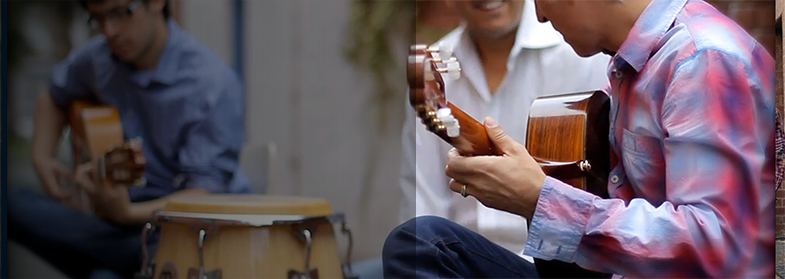The Rest Stroke (The Right Hand)
- Place: this first contact with the string is very important. If you don’t have contact with the string in a consistent and correct place on your finger, then the resulting sound quality will likely be poor.
- Pressure: an inward pressure is key here, with the power joint being the big knuckle joint. This string displacement is much like priming a spring ready to be released with potential energy.
- Release: The follow-through of the release is important too. Following this, the finger will relax and go back to neutral. The placement of the large knuckle joint will determine whether you will play Free or Rest Stroke.
What does plucking a string do to the guitar?
After the string is struck it begins to vibrate. This vibration is carried onto the soundboard via the bridge where the string is connected. The soundboard then helps the air inside the guitar to vibrate as sound waves which exit through the sound hole.
Which finger joints come into play?
The main power joint is the knuckle joint which provides the greatest power and leverage. The finger can be a little curved according to what feels right but it needs to continue to swing through the string, displacing it into the guitar like you would a spring.
Can I pull the string out?
No, if you pull the string the resulting sound will be of poor quality.
What is swing space?
It’s the space under the hand where the finger swings after striking the string.
Should the hand stay still?
Yes, basically the hand needs to keep still to keep control of the movements and power.
What is walking fingers?
This should be done as often as possible and consists of alternate striking of the string by fingers i and m in a walking fashion.

